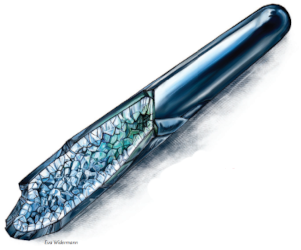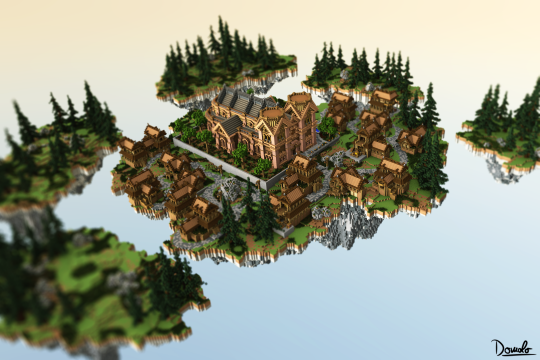
Some thoughts on the Rod of Inertia and the Rod of Cancellation
by RobinRules Cyclopedia wrote:Rods are permanent items that do not require charges. Lastly, a rod may be used by any character class.
A wand is a thin, smooth stick about 18" long; ; a rod is similar to a wand, but is 3' long.
Rod of Inertia: Only a dwarf, halfling, fighter, thief, or mystic may use this unusual item. It may be used as a spear +3 in all respects. On command of the user, it will stop wherever it is, and it cannot be moved by any means except a wish. A second command releases it. If the rod is in motion when stopped, it will continue its direction when released. For example, it may be thrown toward a door and commanded to stop, later released if an enemy enters so that the rod will continue toward the enemy (a normal attack roll is made). If the user falls, a command will stop the rod suddenly, and the user may hold onto the rod.

The limitation to the use describe only Dwarf, Halfling, Fighter, Thief or Mystic. Mages, Clerics, Shamans, Wicca/Wokani, elves as well as Foresters are not able to do so
This seems to suggest the Rod is required to be thrown and then commanded by the thrower. As Mages and clerics are restricted from using spears they can't do this. It also suggests that casters of any sort can't use these rods. They might be able to throw it if they are able to use spears, yet their inherent magic (be it studied or otherwise) disables the activation of the inertia ability of the rod. Also the rod will not work in areas where the vocal activation will not reach the thrown Rod due silence magic(it will still function as a weapon though, and if silenced after activation it can't be deactivated until the silence does pass)
The description is different from the later D&D versions of this magical item; now labelled "Immovable Rod".
D&D later versions wrote:Immovable Rod
This flat iron rod has a button on one end. You can use an action to press the button, which causes the rod to become magically fixed in place. Until you or another creature uses an action to push the button again, the rod doesn't move, even if it is defying gravity. The rod can hold up to 8,000 pounds of weight. More weight causes the rod to deactivate and fall. A creature can use an action to make a DC 30 Strength check, moving the fixed rod up to 10 feet on a success
Here it is not a short spear like in BECMI D&D, it has NO BECMI weight limitations and has way different activation methods(a button)..so that later D&D versions information can be disregarded.
The Rod could be destroyed if can be damaged
The command word to stop (or deactivate and continue) is very short, and can be evoked by the thrower only, within less than a second. Yet mostly it will hit a surface and then be stopped. For a character to stop the thrown rod exactly where desired midair will require the thrower to make an intelligence check on 1d20 with an 5 additional penalty (-5 for magical aptitude missing, +3 for magical charge and -3 for speed weapon thrown). if succesful the weapon will stop exactly where desired. if failed the weapon will stop 1' earlier for each failed points if rolled an even fail, and 1' after the intended location for each fauled point if rolled un uneven fail. the Thrown item, as explained in the canon description will continue its move with its normal intended range (unless obstructed) as any normal thrown spear.
Then there is the effect itself. The rod seems to become locked into location, yet the planet revolving still holds the rods on its location in reference to the planet. This seems to suggest the rod itself is tied into the planet and as well as its effects. So the rod does not affect planetary movements. Then there is the problem if used in flying objects; if activated it would halt the flight of the object and maybe even damage the flying object over time if the force of flight is continuating. This makes the rod on one view a formidable battle item, as well as less functional in internal uses like holding doors. The vessel can still move away from its location thus freeing the door. and if it continues to move against the rod the rod will damage the door accorerdingly. These damages are not explained in canon. So I suggest these as follows; If the vessel is moved against the rod's ends it will eventually break through the material or damage the rod. As the rod is suggested to be a magical creation it is best to suggest it has its own external and internal matter(here I suggest Crystals due its tie in with the planet).
The canon material descriptions of these materials (calculated from CoM creation book page 13) describe these as
Cloth and similar weak materials AC8, HP2 (0.1% of Rods are made of Cloth, Leaves, Bark, Skin)
Wood/Bone AC6, HP1.2 /inch thickness(90% of Rods are made of Wood or bone)
Stone AC6, HP1.66/inch thickness(1% of Rods are made of Stone)
Iron AC2, HP3/inch thickness(7% of Rods are made of Iron)
Steel AC2, HP4/inch thicckness (1.9% of Rods are made of Steel)
I add to these;Crystal AC4, HP40/inch thickness (there are no rods of pure crystal, a coverage is required to concentrate its power in a direction or function)
Use the external material first then the internal material when the external material is damaged, yet the internal AC and HP also affects the external AC if it is stronger.
So combining this a (mostly this is the case) wooden 2 inch diameter Rod of Inertia with a crystaline interior has the following notation; AC4=42.4HP, AC4=40HP
An average door is 3 inches wood thus AC6=3.6HP
Damages on both conflicting surfaces if the movement force continues, occur equally at the rate of 1 between the two conflicting surfaces. So if the wooden rod and the wooden door in a flying vessel conflict there is a damage each round of 1 to both surfaces(thus the Rod AND the door) until the weaker one of these breaks.
A Rod of inertia continuous to function until it fully falls apart (if 1 material HP remains, it is severly damaged with broken external material and cracked crystals, when material HP = 0 it shatters into crystaline and external material fragments. without any use (other than be nondamaging hurtful to barefeet)
The Rod of Cancellation is acting somewhat similar and has a similar build up (external and internal crystaline structure)
Old Basic Book wrote:;
Rod of Cancellation; This rod is usable by any character. It will work only once, but will drain magical items it hits of all magic making them forever nonmagical. The target is treated as having an Armor Class of 9. The DM may adjust the armor Class of an item if it is being used in combat (such as when trying to hit a sword).
Rules Cyclopedia wrote:;
Intelligent magical swords and + 5 magical items may resist the effect of the rod if the user makes a saving throw vs. wands. This merely indicates successful resistance, and the rod still retains its power. A sword +5 with intelligence, for example, gains a +2 bonus to the saving throw.
This suggests these items do not have a save when unused.
There is no notification of effect on continuous magical effects, as well as possible effects on the user of the Rod
This all seems illogical. So Here I suggest the folllowing additions
First a save for the iten based on the creator of the item at the moment of its creation. (minimal 9th level)
Secondly the touch of the rod on a magical item seems to be enough to trigger the effect of nullifying the magic, yet when resisting the effect the Rod still retains its power of Cancelation.
So in combat I would not only use the AC9 target of an item, but also the chance to hit another magical item close to it (an armor, ring, glove, bracers, or such) to be affected instead when the hitroll is a miss,yet another hitroll is required.If it misses again, no touch contact is made at all and the rod is still active.
As suggested above the DM may adjust the armor Class of an item if it is being used in combat, a Dexterity bonus(double it if hasted) might reduce the AC
Thirdly; I would also include the rod to cancel out any magical ongoing spell effect onto a character affected by any magic. So A fighter under the influence of a Berserk Potion, an armor +4, A Bless spell as well as a sword+5 if succesfully hit on the sword will have a nonmagical sword and no longer be Berserk nor Blessed. If the initial hit did miss the armor could have been affected, affecting the Bless and Berserk effect as weel, when even the armor is missed nothing will be affected.
Both these Items use a specific magical effect not listed in any spell.
The Rod of Cancellation makes use of Natural crystals dispelling magic on touch, and these crystals are a natural phenemenom, even if rare. There are two variations of these crystals existing; One kind derives totally on absorbing the Radiance affected magic and thus will only affect any magic as described above based on that magic. It will however no affect natural forms of magic cleaned of Radiance. As this is still rare in 1000AC, you can rulle still all magic is still Radiance tainted, yet further into the future, Witch, Druid, Elven Way of the tree magic and such natural forms will not be affected at all.
The other form of crystals used absorb any magic
Both forms of magic cancellation rods become charged by nullifying the magic. They will not function anymore after having absorbed the magic. This absorbed Radiance will be transformed into a softly (1") glow into the color of the crystal without any other effects, lasting 1 hour for each +1 Magic and/or spell level absorbed. The Radiance affecting Rods will shed its outer surface and become a single crystal without any powers. After a few decades the crystal (unless destroyed earler) will visually begin to grow up to a few feet with side crystals like an agave plant, absorbing more Radiance from the environment, hereby help cleansing the world of Radiance.
The Rod of Inertia are made from other crystals(small Green Nature Crystals=1d12 inches long and 0.5 inch wide, ) , thought to be responsible for the rotation of the world around the sun. They are only found on the surface of the Outer World of Mystara, mostly on the ground in patches (rarely on trees 5%, yet these are 3 times larger) and are seemingly without effect. Their color is green and any divination reveals they are full of Life (presumably from nature--actually from the planet, yet this is still unknown). When harvested and encapsuled with other matter and exposed to a Levitation, Merging potion, as well as a Inertia spell, these green crystals turn blue and can only be moved manually by the caster of the inertia spell on embedded commands in the Inertia spell.
Inertia
(natural) 5th level Mage Spell
Alteration
(known only by Way of the Tree Elves in Karameikos, Wendar, Alfheim)
Range; Touch
Duration; 10 years per level of the caster +2d10 months, or permanent
Effect; One prepared stone or glass item touched can only be moved on command
Casting time; 1 day
Saving Throw; Nil
Preparation time; 20 rounds massaging a single Merging potion into the Crystals as well as the stone or glass object of 1" diameter per level of the caster to be affected
This spell will affect the prepared stone object by merging he crystals into the stone object, thereby transforming the crystals into blue cystals. These crystals then can be affected by a Levitation spell by the caster, and can be moved by the caster only to be placed where desired. when released the affected stone object will not move in any direction. This spell is used to make stairways and platforms into the sky which are not affected by the Day(s) of Dread or any Dispel magic. An architecture skill is required to make a functional stairway and/or platform to build upon. Stone objects affected similarly will enhance the affect, making any surface of 10' or larger permanent. (the floating stairstones will still require replacements over time as they do never touch). When the stones are broken the magic ends also, causing them (and everything on it) to fall down)
This spell is used to make the Floating Tsettè-ainas Temple of the Callarii Elves in Karameikos(see my map here ), as well as some Structures in Glyrlys(amongst the Sky Waterfall created by using a decanter of Elemental Water on the stone structure floating), and the village of Thyrun where all buildings are placed high in the sky between the Hometrees. A truly wonderful location to behold. The Canolbarth is has only a few such locations and even then minor, as they dislike the usage of stone. The Wendar Elves have a few temples affected to float above the trees to better reach their Immortals
The elves keep this spell amongst themselves, and do not share it amongst non elves. It is already a treat to see the effect. Only one group of mages; "the Cheiromar"(CM8-TSR9192-D&D-Mystara-The Endless Stair), of non elven origin has made use of the spell to build their sky abodes, yet not by themselves, by befriended elves. The secret is thus still safe, it suggests some Erewan elves might know the secret spell too, yet have not used it as of yet. The reason for this might be the proximity to the Radiance itself disturbing the casting of the spell.
The Sky Waterfall of Glyrlys of the Callarii Elves in Karameikos

Floating Tsettè-ainas Temple of the Callarii Elves in Karameikos

The village of Thyrun where all buildings are placed high in the sky
